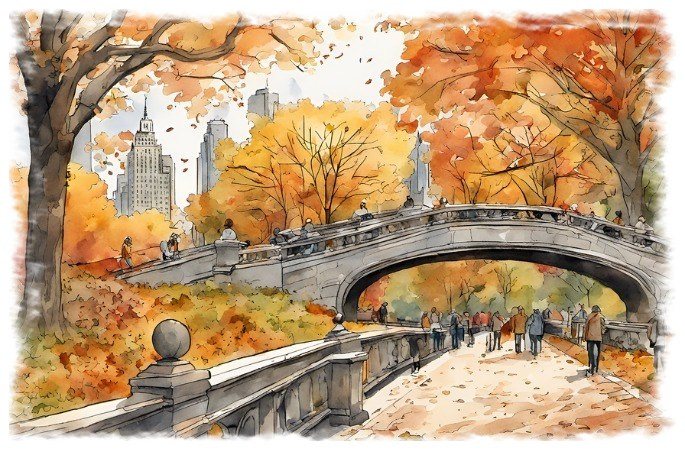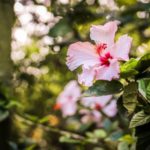Gerard Manley Hopkins’ “spring and fall” and Robert Frost’s “Design” in Relation to Their Depiction of Nature – A Critical Study
The portrayal of nature in literature encompasses a rich tapestry of perspectives and philosophies inherent to human thought. In alignment with this notion, Gerard Manley Hopkins’ “Spring and Fall” and Robert Frost’s “Design” emerge as compelling examples of nature’s distinct role within poetry. While “Spring and Fall” delve into human life’s transience through nature, “Design” conveys the complexity of nature and human interpretations. The intellectual vantage points on nature’s portrayal within these two poems lie a solid groundwork for a more significant and comprehensive analysis.
To commence the analysis, the poem “Spring and Fall” encapsulates the profound connection between human emotions and the natural world. Through skilful employment of nature as a metaphor, Hopkins invites readers into the emotional world of a young girl named Margaret. Margaret grapples with the complexities of her own mortality and the inevitability of change. In this exploration, the poem presents nature through the imagery of the tree “Goldengrove.”
Throughout the poem, the narrator closely aligns Margaret’s emotional journey with the changes observed in the natural world and seeks to console Margaret as she mourns the falling leaves, as expressed in the line, “Margaret are you grieving over Goldengrove unleaving.” The depiction of the falling leaves vividly illustrates the theme of changing seasons and the inevitable cycle of life and death. These leaves transform from vibrant green to fading brown, symbolising mortality. The phrase “leaves like the things of man” introduces an element of ambiguity, which could encompass human struggles. However, the narrator acknowledges that Margaret may not fully grasp these complex ideas due to her youthful innocence, as indicated in the line, “you with your fresh thoughts care for, can you?”
Nevertheless, the speaker shares his own life-learned insights, emphasising that human sorrows endure and deepen with time, eloquently expressed in the line, “as the heart grows older it will come to such sights colder.” The narrator’s understanding of Margaret’s inability to fully comprehend his words is further underscored with lines like “By and by, nor spare a sigh” and “though worlds of wanwood leafmeal lie, and yet you will weep and know why.” Despite this, the speaker reassures Margaret that human anguish stems from separations, much like the falling leaves, as verbalised in “Goldengrove unleaving.” This simile extends to souls departing from bodies in death. The lines “no matter, child, the name: sorrow’s springs are the same” reinforce this message. In conclusion, “Spring and Fall” conveys that Margaret’s grief is anchored to the falling leaves, symbolising her growing awareness of mortality, as in the lines, “It is the blight man was born for, it is Margaret you mourn for.” The poem also addresses the complexity of these concepts, acknowledging the difference in perspective between the child and the adult narrator.
This interplay between nature and human experiences encourages readers to confront the transient nature of life and interact with their own cycles of growth and loss. Ultimately, the poem suggests a profound unity between human emotions and the natural world, implying that nature can serve as a source of wisdom and enlightenment, guiding individuals to contemplate serious existential truths.
Furthermore, the poem “Design” opens with striking imagery – a white spider poised on a white heal-all flower, clutching a dead white moth. The speaker intriguingly describes this image as a composition of “death and blight mixed, ready to begin the morning right.” This representation metaphorically mirrors the human habit of starting the day with a cup of tea, evoking questions about life’s cyclic nature.
From this viewpoint, the poem underscores the juxtaposition of beauty and cruelty, leading to questions about whether events are orchestrated by a higher design or are simply a result of unpredictable occurrences, including the tiniest and inconsequential aspects of the natural world. The heal-all flower, known for its healing properties, ironically becomes the setting for a murder. The pervasive use of the colour white, often symbolising peace, among all the characters in the poem makes the scene less natural and suggests that something is in control of these natural elements. Phrases such as “dead wings” and “holding like a paper kite” shed light on the idea that even though wings and kites symbolise freedom, in this context, they indicate the absence of freedom, reinforcing the concept of design.
Moreover, it’s noteworthy that the narrator deliberately included non-human characters to heighten the reader’s religious criticism. Unlike humans endowed with rational thinking, these non-human characters cannot question their circumstances. This contrast allows readers to contemplate the idea of divine design and seek answers regarding suffering in a world where “design governs [s] in a thing so small.”
The poem is a poignant reminder that life’s mysteries defy straightforward explanations. It uplifts readers to humbly recognise the boundaries of human understanding, leaving them with a thoughtful sense of awe and curiosity in the face of existence’s puzzling complexities. ‘Design’ thus is a compelling reflection on the intricate relationship between nature and human inquiry, where the canvas of reality summons continued examination.
In addition to the thematic depth of these poems, Gerard Manley Hopkins and Robert Frost skillfully employ a range of literary techniques to deliver profound insights about nature and human understanding, engaging readers in meditative quests. Metaphorical symbolism takes centre stage in the narrative of these poems. Both poets harness vivid imagery to convey their perspectives. However, their language choices differ. Hopkins uses direct conversation even when the listener is a child, while Frost conveys his ideas with euphonic language, although his message is full of cacophonies. Remarkably, amid their meaningful philosophical explorations, they also maintain elements of poetic beauty, including alliteration, enticing readers to delve deeper into the realms of nature and human existence while savouring the lyrical richness of their poetry.
In essence, ‘Spring and Fall’ and ‘Design’ compel readers to ponder life’s complexities and the influence of destiny through thought-provoking rhetorical questions and vivid visualisation, ultimately inviting us to delve into the intricate relationship between humanity, nature, and the enigmatic forces that shape our existence.
Spring and Fall
By Gerard Manley Hopkins
to a young child
Márgarét, áre you gríeving
Over Goldengrove unleaving?
Leáves like the things of man, you
With your fresh thoughts care for, can you?
Ah! ás the heart grows older
It will come to such sights colder
By and by, nor spare a sigh
Though worlds of wanwood leafmeal lie;
And yet you wíll weep and know why.
Now no matter, child, the name:
Sórrow’s spríngs áre the same.
Nor mouth had, no nor mind, expressed
What heart heard of, ghost guessed:
It’s the blight man was born for,
It is Margaret you mourn for.
Gerard Manley Hopkins: Poems and Prose (Penguin Classics, 1985)
Design
by Robert Frost
I found a dimpled spider, fat and white,
On a white heal-all, holding up a moth
Like a white piece of rigid satin cloth–
Assorted characters of death and blight
Mixed ready to begin the morning right,
Like the ingredients of a witches’ broth–
A snow-drop spider, a flower like a froth,
And dead wings carried like a paper kite.
What had that flower to do with being white,
The wayside blue and innocent heal-all?
What brought the kindred spider to that height,
Then steered the white moth thither in the night?
What but design of darkness to appal?–
If design govern in a thing so small.
-Excerpt from A Further Range (1936)



